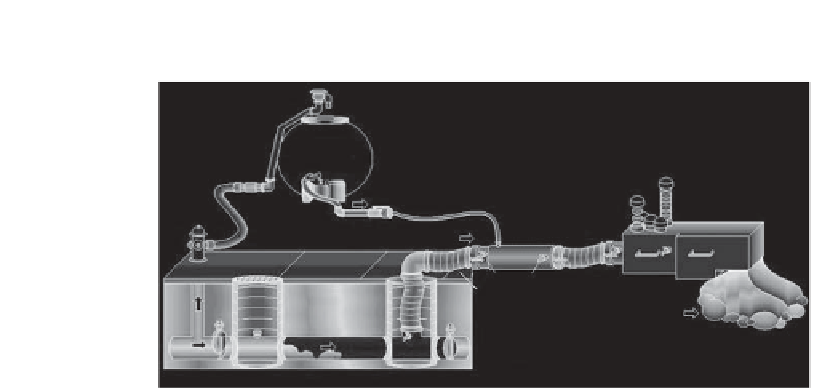Environmental Engineering Reference
In-Depth Information
Sodium
Metabisulfite
Cl
2
Neutralizer
Dechlorinator
Polybraid Injection Hose
Pump
Discharge
to Static Mixer
Hydrant
Source
Static Mixer
Discharge
Sample Taps
6-in.
Hose
Discharge to
Environment
Valve #1
Valve #2
Courtesy Nicole Peschel
Figure 7-2
Pipeline dechlorination system
chemical in the flow path. For this application, the dechlorinat-
ing agent is in tablet or powder form.
The advantages of flow-through systems are that they are
simple and can be used for sheet flow applications as well as for
channelized or pumped flow. The disadvantages are that there is
limited control over the dosage; overdosing or underdosing to
significant levels could occur; and it may be difficult, in some
cases, to tell when the chemical has been used up and must be
replaced.
Also, because of the contact time required for dissolution of
powder/tablets, this method is more suitable for low- and medium-
velocity discharges. This method may, however, be suitable for
dechlorinating releases from unidirectional flushing where the
velocity of the flow is approximately 5.0 ft/sec provided that
equipment is specifically designed for this flow.
A variation in the application of a flow-through system is the
automatic tablet dispenser. These devices are similar to the tablet
feeders currently used for disinfection in many water/wastewater
treatment plants. The feeders typically consist of a nonmoving
housing and automatic feed tubes. The tubes are inserted down
through a removable top cover of the feeder into the stream of
water. The lower end of each tube is slotted to permit free flow of








































































































Search WWH ::

Custom Search